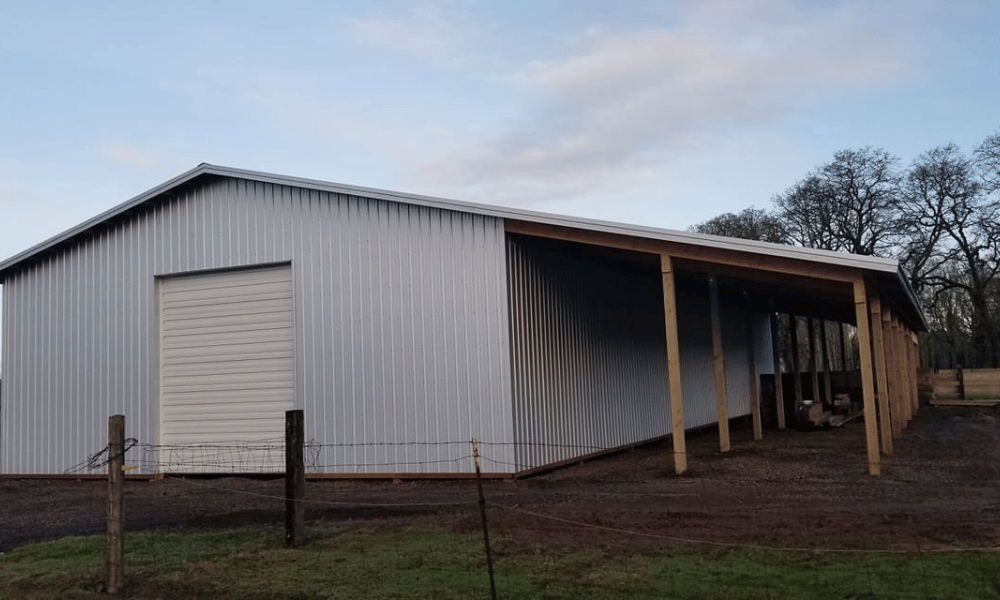Introduction
When you think about agricultural structures, what comes to mind? Barns, silos, and perhaps greenhouses? The agricultural sector is constantly evolving, and one of the most significant advancements has been the introduction of open-span design. This innovative approach has transformed how we build agricultural facilities, offering unparalleled flexibility and efficiency. In this article, we will explore “The Versatility of Open-Span Design in Agricultural Structures,” delving into its benefits, applications, and potential future developments.
Understanding Open-Span Design
What is Open-Span Design?
Open-span design refers to architectural layouts that eliminate internal support columns. By utilizing engineered trusses or other structural systems, these designs create large, unobstructed spaces ideal for various agricultural needs. This model is especially beneficial for pole buildings.
Why Choose Open-Span Structures?
The advantages are numerous:
Maximized Space: Without internal columns, farmers can use every inch of space efficiently. Flexibility: These structures can be easily modified or expanded based on changing needs. Enhanced Functionality: The open layout allows for better air circulation and natural light penetration.Key Features of Open-Span Designs
Some key features include:
- Engineered wood or steel trusses High ceilings Customizable layouts
The Versatility of Open-Span Design in Agricultural Structures
Open-span design brings a unique versatility to agricultural structures that few other designs can match. Whether it's a dairy barn that requires ample room for livestock movement or a storage facility needing maximized capacity, open-span buildings provide solutions tailored to diverse agricultural practices.
Applications in Agriculture
Pole Buildings: A Prime Example
Pole buildings embody the essence of open-span design. With their minimal foundation requirements and quick construction timelines, they have become increasingly popular among farmers looking to optimize their facilities.
Dairy Farms: Enhancing Cow Comfort
Open-span designs allow for larger barns where cows can move freely. This arrangement not only improves animal welfare but also facilitates easier management practices.
https://www.deanlindseyconstruction.com/agricultural-pole-buildingsGrain Storage: Maximizing Capacity
In grain storage facilities, the absence of columns means more efficient use of space for grain bins and equipment storage.
Adaptability to Various Agricultural Needs
One of the standout features of open-span design is its adaptability. Whether you're running a small organic farm or managing a large-scale operation, these structures can be tailored to fit your specific requirements.
Benefits of Open-Span Design in Agriculture
Cost-Efficiency in Construction
While the initial investment might seem high compared to traditional building methods, the long-term savings in maintenance and operational costs often outweigh these concerns.
Environmental Considerations
Open-span designs typically incorporate sustainable building materials and energy-efficient practices, making them an eco-friendly choice for modern agriculture.
Table: Cost-Benefit Analysis
| Aspect | Traditional Buildings | Open-Span Buildings | |---------------------|----------------------|---------------------| | Initial Cost | High | Moderate | | Maintenance Costs | Ongoing | Reduced | | Space Utilization | Limited | Maximized |
Design Considerations for Open-Span Structures
Material Selection: Wood vs. Steel Trusses
Choosing between wood or steel trusses affects durability and cost:
Wood Trusses: Often more cost-effective but may require more maintenance. Steel Trusses: Durable and low-maintenance but can be more expensive upfront.Ventilation Systems: Importance in Agriculture
Proper ventilation is crucial for maintaining air quality within open-span structures. Utilizing ridge vents and sidewall openings ensures adequate airflow while minimizing moisture buildup.
Challenges Faced by Open-Span Designers
Weather Resistance Concerns
Extreme weather conditions pose challenges regarding durability and insulation in open-span designs.
Regulatory Hurdles
Farmers may face zoning restrictions when constructing large pole buildings or other structures featuring open spans.
FAQ Section
1. What types of buildings benefit from open-span design?
Open-span design is particularly advantageous for barns, grain storage facilities, greenhouses, and even livestock shelters such as dairy farms.
2. Are there any drawbacks to using pole buildings?
While pole buildings are cost-effective and quick to construct, they may require specific maintenance considerations depending on local weather conditions.
3. How does open-span design contribute to sustainability?
These structures often utilize renewable materials and can incorporate energy-efficient systems like solar panels or rainwater harvesting systems.
4. Can I modify an existing structure into an open-span design?
Yes! However, it’s essential to consult with a structural engineer to ensure safety during retrofitting processes.
5. What are some common misconceptions about open-span designs?
Many people believe that open spans compromise structural integrity; however, with proper engineering methods in place, they remain robust and reliable alternatives.
6. How do I choose between wood or steel trusses for my project?
Your choice should depend on budget constraints as well as long-term maintenance preferences—wood requires more upkeep than steel but is generally less costly initially.

Conclusion
“The Versatility of Open-Span Design in Agricultural Structures” has revolutionized how farmers approach building needs across various sectors within agriculture—from enhancing livestock comfort on dairy farms to optimizing storage solutions for grain harvests. By prioritizing efficient space usage and adaptability while considering environmental impacts through sustainable practices—all aspects point towards an exciting future ahead filled with potential growth opportunities within this versatile framework!
In conclusion, if you're looking at building or renovating your agricultural facilities anytime soon—consider embracing the advantages that come alongside adopting an open-span design ethos; it might just transform your operations entirely!